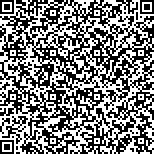| 引用本文: | 李彬,倪东宇,张梦奇,张红萍,吴纤愫,徐虹,郑国平,王琼芬.指纹图谱结合多成分含量测定的猪苓配方颗粒质量评价[J].中国现代应用药学,2023,40(18):2556-2561. |
| LI Bin,NI Dongyu,ZHANG Mengqi,ZHANG Hongping,WU Qiansu,XU Hong,ZHENG Guoping,WANG Qiongfen.Quality Evaluation of Polyporus Formula Granules Based on Fingerprint and Multi-component Determination[J].Chin J Mod Appl Pharm(中国现代应用药学),2023,40(18):2556-2561. |
|
| |
|
|
| 本文已被:浏览 1249次 下载 669次 |

码上扫一扫! |
|
|
| 指纹图谱结合多成分含量测定的猪苓配方颗粒质量评价 |
|
李彬, 倪东宇, 张梦奇, 张红萍, 吴纤愫, 徐虹, 郑国平, 王琼芬
|
|
舟山市食品药品检验检测研究院, 浙江 舟山 316000
|
|
| 摘要: |
| 目的 建立猪苓配方颗粒质量评价方法,综合评价不同厂家产品质量均一性和稳定性。方法 采用HPLC以Shim-pack GIST C18-AQ (4.6 mm×150 mm,3 μm)为色谱柱,乙腈-水溶液为流动相,梯度洗脱,流速1.0 mL·min–1,检测波长为350 nm (0~3 min)和250 nm (3~35 min),柱温30℃,构建不同厂家猪苓配方颗粒指纹图谱,指认共有峰,并进行相似度评价、聚类分析;采用相同HPLC测定4种活性成分含量,对16批样品进行质量分析和评价。结果 猪苓配方颗粒指纹图谱共标定14个共有峰,指认出其中6个成分,分别为2号峰(尿苷)、4号峰(鸟苷)、6号峰(腺苷)、12号峰(猪苓酮B)、13号峰(猪苓酮A)、14号峰(猪苓酮C);16批样品指纹图谱相似度为0.609~0.982;聚类分析将全部样品分为2大类;鸟苷、腺苷、猪苓酮B、猪苓酮A在各自质量浓度范围内线性关系良好,r均≥0.999 7;仪器精密度、重复性、稳定性试验的RSD均<3%;平均加样回收率分别为98.22%,99.32%,99.56%,99.15%,RSD均<3%(n=6)。16批样品中,鸟苷、腺苷、猪苓酮B、猪苓酮A含量分别为6.326~28.006,13.392~44.058,10.324~30.335,9.270~26.964 μg·g–1。结论 不同厂家样品存在较大的质量差异,本研究建立的指纹图谱结合多指标性成分含量测定方法可全面、准确评价猪苓配方颗粒内在质量,为整体提升该药品质量提供依据。 |
| 关键词: 猪苓配方颗粒 高效液相色谱法 指纹图谱 聚类分析 含量测定 质量评价 |
| DOI:10.13748/j.cnki.issn1007-7693.20231239 |
| 分类号:R284.1 |
| 基金项目: |
|
| Quality Evaluation of Polyporus Formula Granules Based on Fingerprint and Multi-component Determination |
|
LI Bin, NI Dongyu, ZHANG Mengqi, ZHANG Hongping, WU Qiansu, XU Hong, ZHENG Guoping, WANG Qiongfen
|
|
Zhoushan Institute for Food and Drug Control, Zhoushan 316000, China
|
| Abstract: |
| OBJECTIVE To establish the quality evaluation method of Polyporus formula granules, and to comprehensive evaluate the quality uniformity and stability of products from different manufacturers. METHODS The fingerprint of Polyporus formula granules was determined by HPLC. Shim-pack GIST C18-AQ(4.6 mm×150 mm, 3 μm) was used, mobile phase was acetonitrile-water with gradient elution, volume flow rate was 1.0 mL·min-1, detection wavelength was 350 nm (0-3 min) and 250 nm(3-35 min), column temperature was 30℃. HPLC fingerprints of Polyporus formula granules from different manufacturers were established, common peaks were identified, similarities were evaluated and cluster analysis were performed. HPLC was used to determine the contents of 4 active ingredients, and the quality of 16 batches of samples was analyzed and evaluated. RESULTS The established HPLC fingerprint of Polyporus formula granules defined 14 common peaks and identified 6 common components. They were peak 2(uridine), peak 4(guanosine), peak 6(adenosine), peak 12(polyporusteron B), peak 13(polyporusteron A), peak 14(polyporusteron C). The similarity of 16 batches of samples were 0.609-0.982, and could be clustered into 2 categories by cluster analysis. Guanosine, adenosine, polyporusteron B and polyporusteron A all showed good linear relationships(r ≥ 0.999 7), RSDs of instrument precision, stability and reproducibility tests were <3%. The average recoveries were 98.22%, 99.32%, 99.56%, 99.15%, RSD<3%(n=6). The contents of guanosine, adenosine, polyporusteron B, polyporusteron A in 16 batches of samples were 6.326-28.006, 13.392-44.058, 10.324-30.335, 9.270-26.964 μg·g-1.CONCLUSION There is considerable quality difference among different manufacturers. The established fingerprint combine with the compound determination can comprehensively and accurately evaluate the internal quality of Polyporus formula granules, and provide a basis for the overall improvement of the quality. |
| Key words: Polyporus formula granules HPLC fingerprints cluster analysis content determination quality evaluation |
|
|
|
|
